Workplace Law Report: Analysis of Redundancy and Legal Implications
VerifiedAdded on 2020/04/29
|5
|1105
|81
Report
AI Summary
This report examines a workplace law case concerning redundancy. It analyzes the legal position of an employee, Ken, who faces redundancy. The report explores the relevant rules and legal principles, including the Fair Work Act 2009 and the concept of implied terms in employment contracts. It references key cases such as Barker v Commonwealth Bank of Australia, Con-Stan Industries of Australia Pty Ltd v Norwich Winterthur Insurance (Australia) Ltd, UES (Int'l) Pty Limited v Leevan Harney, Morgan v Mineral Technologies Pty Ltd, Australian Iron & Steel Pty Ltd v Banovic, and Construction, Forestry, Mining and Energy Union v Mount Thorley Operations Pty Ltd. The application section considers the specific scenario where Ken, a long-term employee, is made redundant while a less experienced employee, Bob, is retained. The report argues that the 'last in first off' policy is not an implied term and that the employer's decision is fair under the law. The conclusion reinforces that the company did not breach legal provisions by not using the 'last in first off' policy. The report offers a comprehensive overview of the legal aspects of redundancy, contract terms, and relevant case law.
1 out of 5
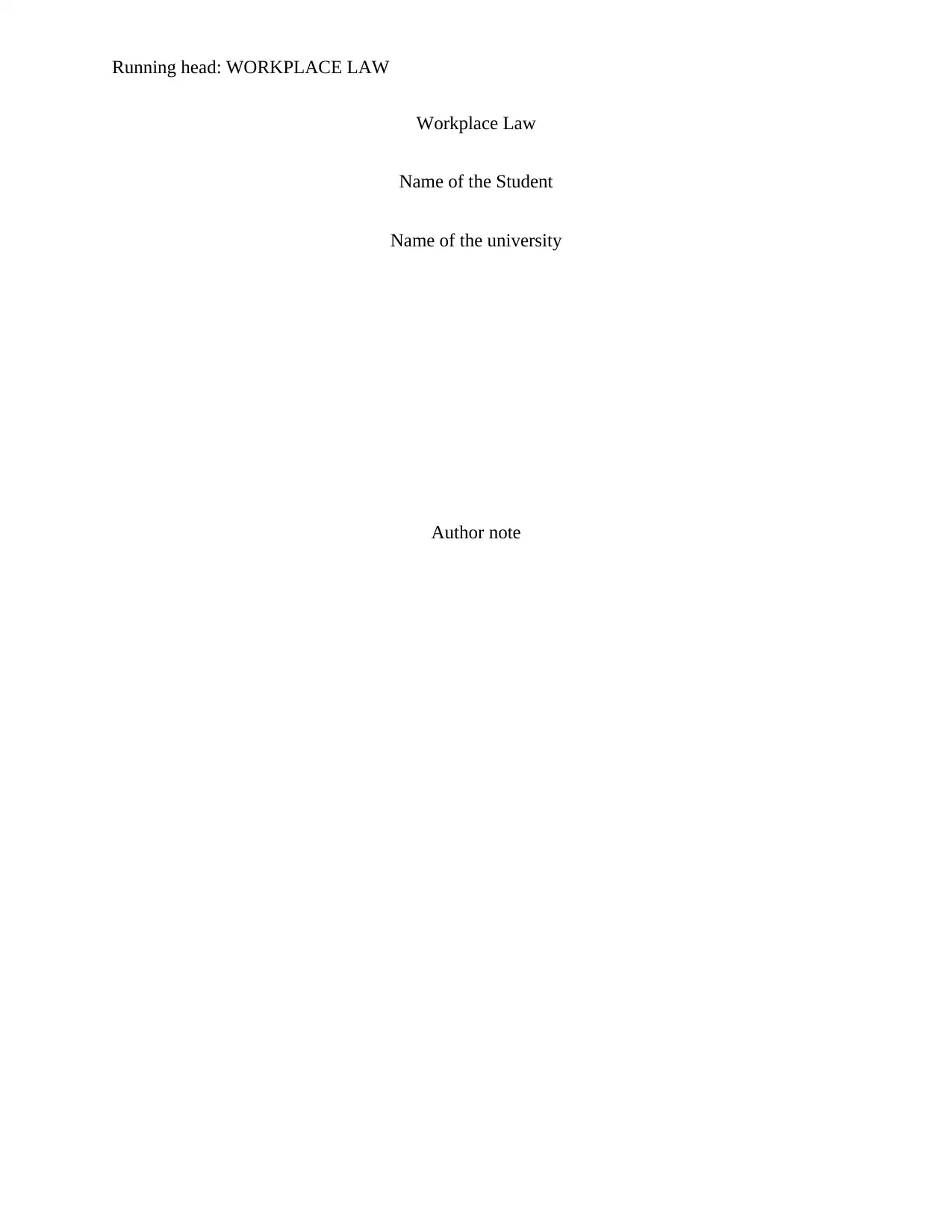
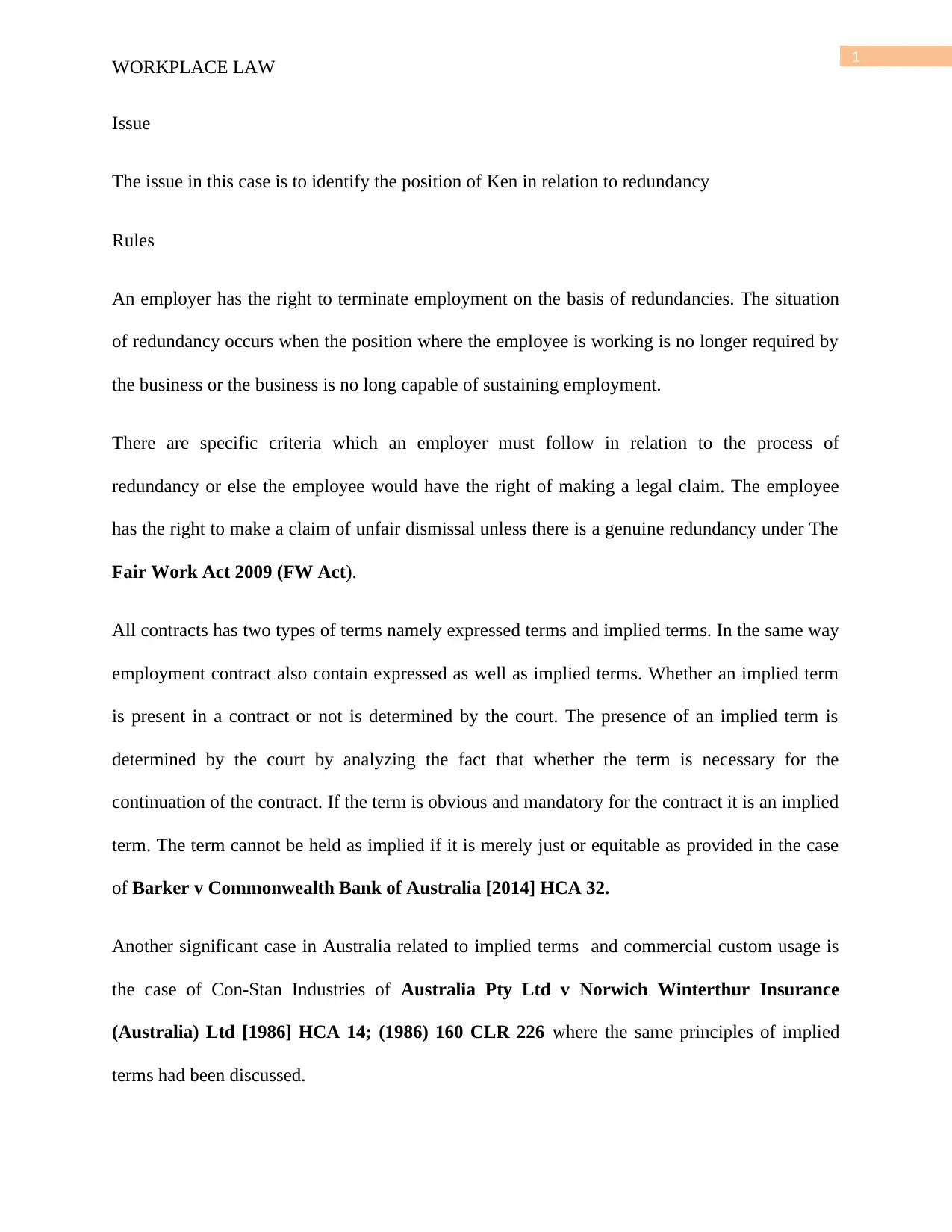
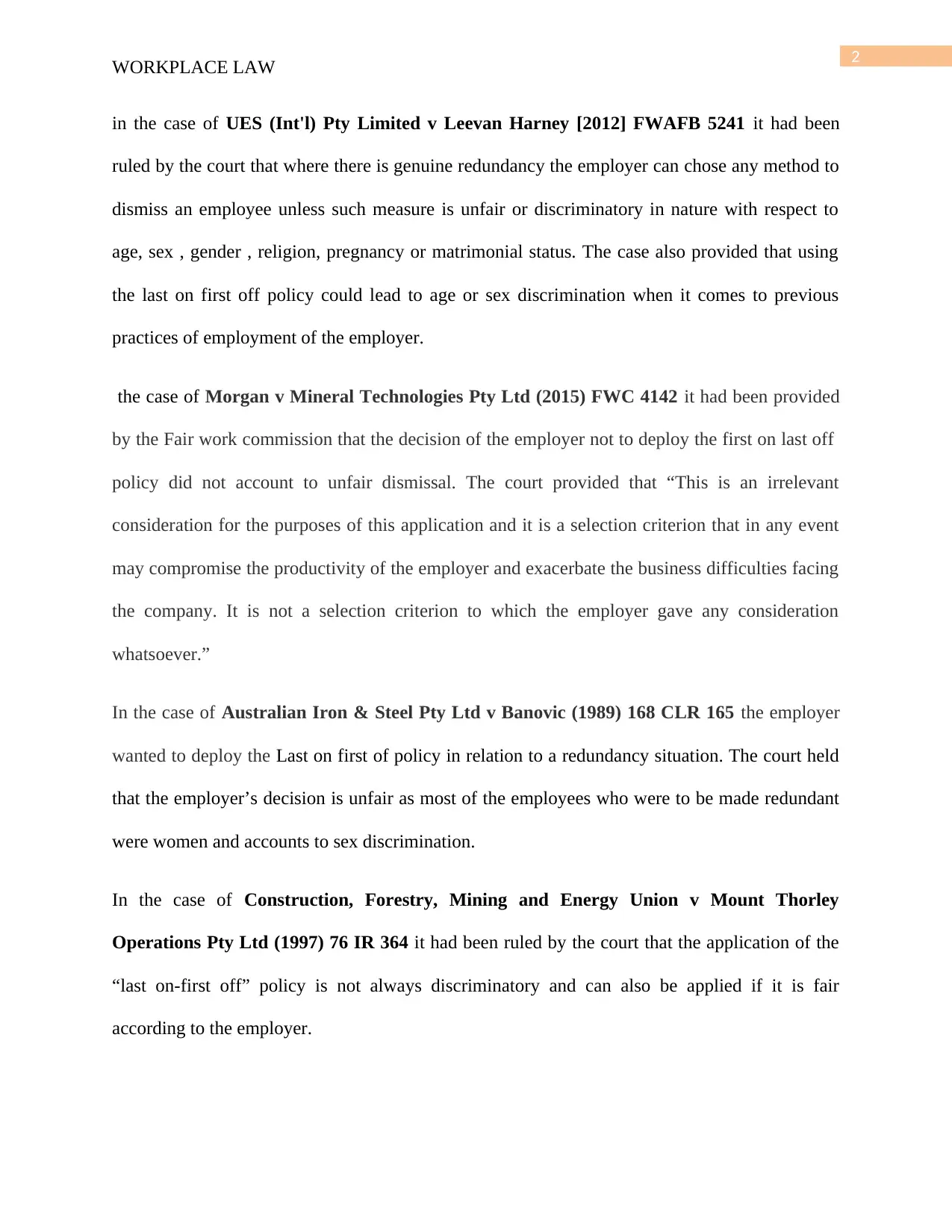

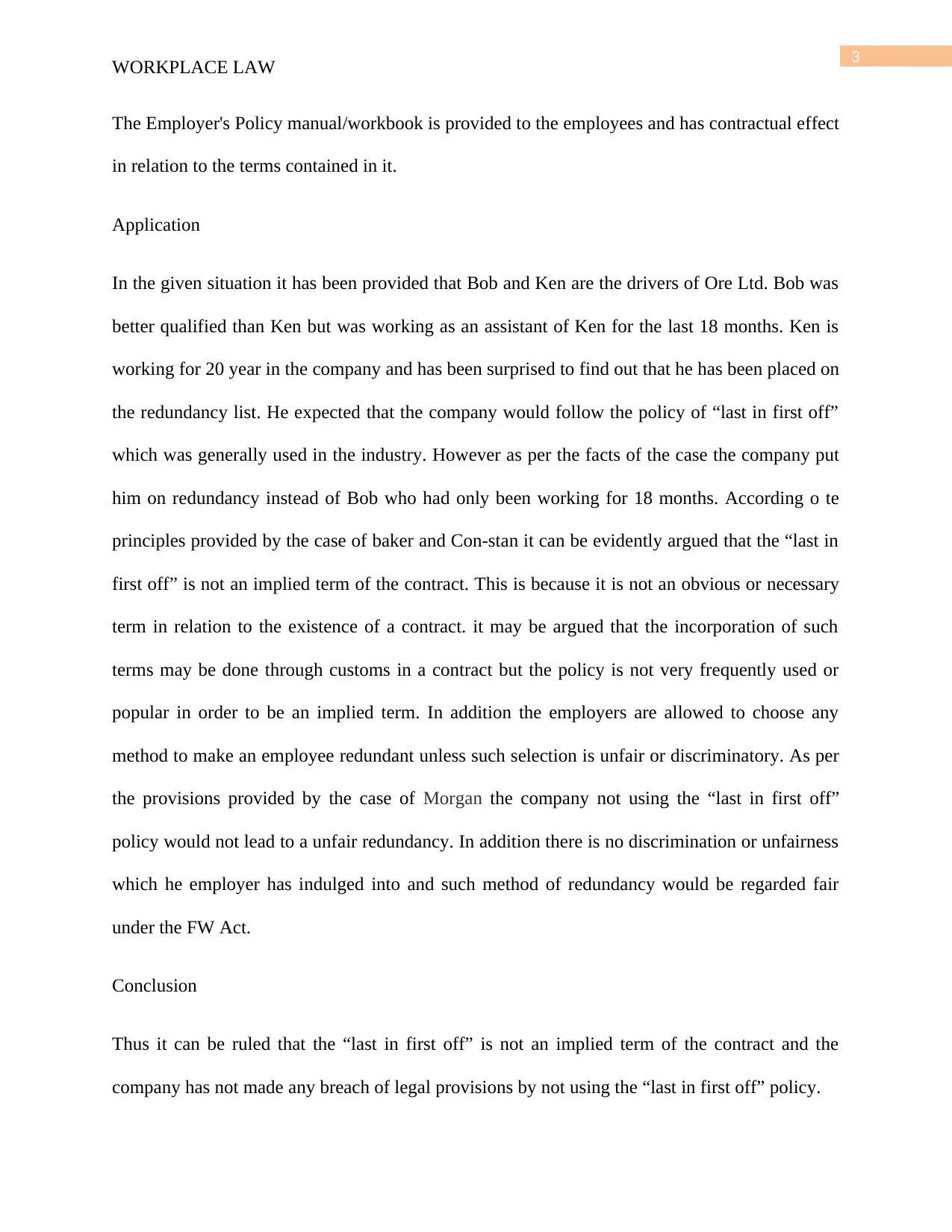
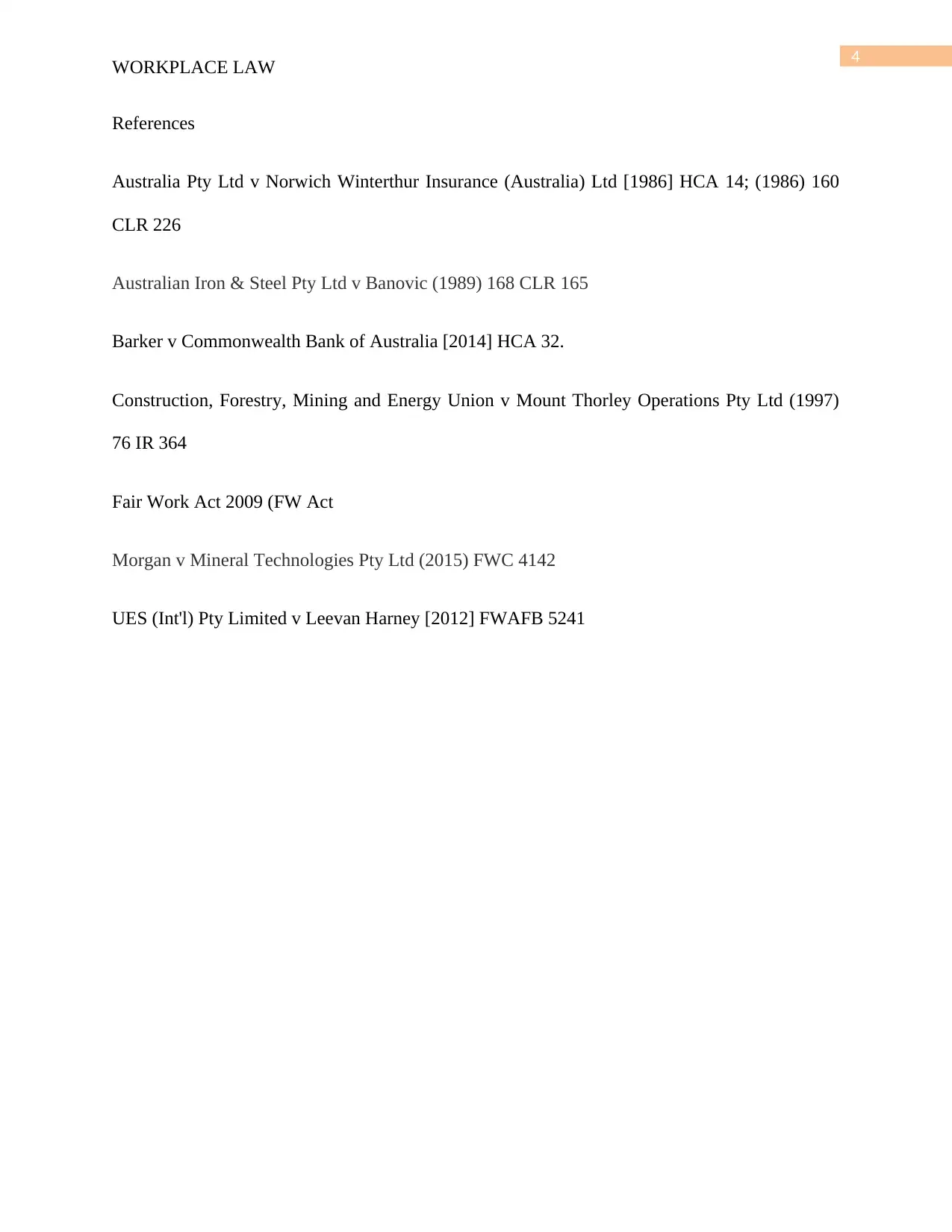





![[object Object]](/_next/static/media/star-bottom.7253800d.svg)